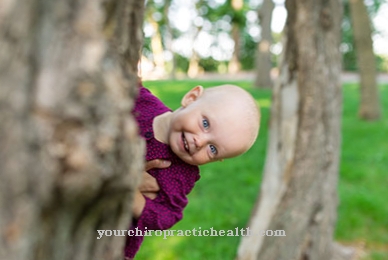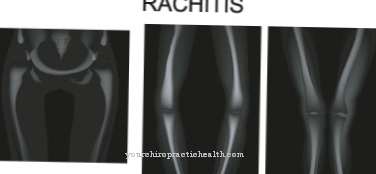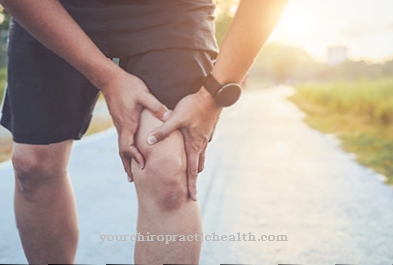A mastitis or mastitis is an inflammatory disease of the breast or nipple. Most breast infections occur during breastfeeding after pregnancy. But also the male breast can e.g. Get infected or sore from rubbing improper clothing while jogging. However, in this post we will look at breast inflammation during breastfeeding in women.
What is a breast infection?
A breast infection (mastitis) or Breast infection is an infection of the female mammary gland caused by bacteria, which usually spreads through the smallest skin lesions. The much more frequent breast inflammation during breastfeeding (mastitis puerperalis) is differentiated from the independent form (mastitis non puerperalis). About every 20th woman who is breastfeeding is affected by this disease.
causes
Breast inflammation usually occurs on one side and occurs most frequently up to the 28th day after the birth.The entry portals for breastfeeding mothers are usually small skin injuries to the nipple, which are caused by the suckling of the baby. There is a bacterial colonization and finally an infection by typical skin germs (mostly by Staphylococcus aureus), which are in the mouth of the baby.
Incorrect attachment techniques, sore nipples, but also a blockage of the milk have a beneficial effect.
The rare non-puerpural breast inflammation is also triggered by small skin injuries. Hormonal disorders, metabolic diseases and certain drugs promote the development. With this form, breast cancer must always be ruled out, as it can look clinically identical.
Symptoms, ailments & signs

© designua - stock.adobe.com
A number of symptoms can occur with a breast infection. Typically, there is an extensive feeling of pain and tension, which is usually associated with hardening of the chest. The affected breast is also red and swollen. Overheating of the chest can also be observed.
Accompanying this is often a sudden fever, which manifests itself in acute circulatory problems, sweating and an increasing feeling of illness. With mastitis outside of breastfeeding, the symptoms mentioned usually appear in a weakened form, but can recur.
If the symptoms occur during breastfeeding, they are more intense, but usually only occur once. Recurrence is relatively unlikely. In individual cases, however, breast inflammation can lead to the development of purulent, encapsulated abscesses.
In the most severe cases, these can develop into fistulas through which pus and other fluids can get into the tissue and other organs or the skin. Breast infection can be clearly diagnosed on the basis of these symptoms and complaints. If there is no treatment, the swelling usually increases in size, but disappears on its own after one to two weeks at the latest.
course
At the beginning of a breast infection, there is usually one-sided pain in the nipple area. Fever over 38.5 degrees Celsius, shivering and exhaustion are signs of infection. Reddening and overheating on the breast, possibly an eczema-like rash, are indicative. The milk changes and in some cases has bloody or purulent additions. If the breast is inflamed, the lymph nodes in the armpit are swollen and tend to be tender.
So complications can occur with untreated breast inflammation abscesses (encapsulated pus collections). These show up as a palpable swelling under the skin, which typically feels like a gel.
Complications
There are a number of complications that can occur with breast infections. If breast inflammation is treated incorrectly or too late, easily delimited collections of pus, so-called abscesses, can form. If the abscesses do not empty by themselves, they must be surgically opened.
If abscesses are left untreated, channels known as fistulas can form between the abscess and the skin. Fistulas, in turn, can be entry portals for bacteria. In severe cases, blood poisoning (sepsis) can occur.
A breast infection is often associated with pain, a feeling of tension, redness and swelling. A feeling of warmth and pain in the nipple area can also be associated with a breast infection. The lymph nodes in the armpits can swell. Thickenings on the chest are also possible.
Other complications associated with a breast infection can include a fever, malaise, and chills. Affected women feel tired, exhausted and sick. Mothers with a breast infection can have problems breastfeeding. Milk congestion can occur, the breast is full and painful. As a result, it is more difficult for the milk to flow. Breast infections can occur repeatedly outside of breastfeeding and can also be chronic.
When should you go to the doctor?
In the case of breast inflammation, it is important to promptly clarify the symptoms of the woman concerned by the treating gynecologist or a supervising midwife. This applies to both breast inflammation within and outside of the breastfeeding period.
If breast inflammation is triggered by breastfeeding, it is a trigger that is maintained for a longer period, not least at the request of the woman. However, in order to enable the mother to breastfeed several times a day, even with a breast inflammation, if possible without great pain, an early visit to the doctor or alternatively the midwife is recommended. Both professional groups are professional contacts who can recommend suitable therapies to women that make breastfeeding still possible and do not pose a risk to the baby.
Breast inflammation outside of the breastfeeding period also justifies going to the gynecologist quickly. This is especially true if the symptoms such as redness, swelling and pain are severe, increasing or permanent or if there is a fever or a clear feeling of illness. The point here is not only to treat the often very unpleasant symptoms of breast inflammation with the doctor. It is also important to rule out inflammatory breast cancer, as this variant of breast cancer manifests itself in a manner similar to breast inflammation and requires prompt treatment due to its rapid progression.
Doctors & therapists in your area
Treatment & Therapy
According to the latest studies, weaning is not necessary if you have a breast infection. This measure should also be an exception, since weaning is a heavy burden for women and can sometimes even delay the course of the disease and the healing process. If the baby is put on correctly, it can release a build-up of secretion by sucking and thus accelerate healing.
Drug therapy with antibiotics should be used. If the antibiotic is chosen accordingly, it is unlikely that the child will be harmed by the medication if breastfeeding is continued. A risk for the breastfed child from the infection itself could not be determined in the clinic.
If an abscess has already occurred, drug therapy is no longer sufficient. The abscess usually needs to be opened surgically. In addition, e.g. Further pus drainage can be ensured via a rubber strap.
The wound cavity must heal from below in order to prevent the abscess from forming again. In addition, it can be rinsed with an antibiotic or antiseptic solution.
Pain relievers are used to relieve pain, especially so-called NSAIDs (e.g. diclofenac), which are harmless to the child and also have an anti-inflammatory effect. Bed rest and adequate sleep are also useful. Cooling measures are also used successfully; in addition to cool packs, quark or cabbage wraps are also very gentle and long-lasting effective.
Breast inflammation during breastfeeding is a very common disease in a sensitive area. The women face many fears, e.g. whether the treatment is harming the child or whether they can continue to feed their child naturally. Therefore, in addition to the actual therapy, good psychological support for doctors and midwives is an important building block for recovery.
Outlook & forecast
The chances of a cure for a breast infection are good. In many cases it disappears automatically within a few days if the mammary gland and nipple are protected. To help shorten the healing process, soothing ointments can be applied to the chest.
Most patients are diagnosed with breast infection while they are breastfeeding. Overuse of the mammary gland often leads to inflammation. With medical treatment, the inflammation disappears completely within a few days or weeks. It is also helpful to change the breastfeeding technique used to reduce the risk of the breast infection recurring within the breastfeeding period.
Breast infection outside of breastfeeding increases the likelihood of recurrence many times over. There is also the risk that it will develop into a chronic breast inflammation. If a purulent fistula or abscess forms when there is inflammation, surgery is performed. The tissue changes under the skin are removed or emptied within the mammary gland and medically treated.
The risk of complications or other illnesses is significantly increased in smokers and people with a weakened immune system. The healing path is lengthened or the transition to chronic breast inflammation is facilitated by the poor state of health.
Aftercare
Breast inflammation occurs inside and outside of breastfeeding. Due to the various causes of the two variants, the aftercare is also somewhat different. In the case of breast infections during breastfeeding, aftercare also means finding the right time to start breastfeeding again or to stop breastfeeding.
Here midwives and gynecologists, but also lactation consultants, are the right people to contact. In addition, the two breasts should be used alternately for breastfeeding or, if only one breast was affected by the inflammation, it should be spared more. If the inflammation arose outside of breastfeeding, it is important to use good hygiene to prevent pathogens from penetrating through the nipple or skin tears, as far as possible. Strengthening the immune system can also prevent the breast infection from recurring. This includes getting enough sleep and eating a healthy diet.
In both cases of breast infection, it is advisable to wear a well-fitting bra. It reliably supports the affected tissue and is particularly important in the regeneration and aftercare phase in order not to let the breast inflammation flare up again. The bra can also be worn while sleeping. However, models with temples, which could negatively affect the fabric through pressure, should be avoided and a softer variant should be chosen.
You can do that yourself
If a breast infection is suspected, those affected should immediately consult a gynecologist. Depending on the severity of the disease, antibiotic therapy is carried out or attempts are made to reduce the swelling of the mammary glands by relieving the pressure and cooling. In the case of drug treatment with antibiotics, probiotics should be taken at the same time, as the drug also destroys the healthy intestinal bacteria and thus puts greater stress on the immune system.
Often the breast infection occurs during breastfeeding. If streptococci are the cause of the disease, you should take a break from breastfeeding. Otherwise, mothers can continue breastfeeding as usual. In the times between breastfeeding meals, cooling quark compresses and compresses with antibacterial plant extracts such as sage are recommended.
The female breast can still be relieved by a tightly fitting bra and regular emptying - by stroking or pumping - the breast. This reduces the pressure in the inflamed mammary glands. In order to prevent further breast infections caused by breastfeeding, mothers should have a midwife show them various techniques. The baby's mouth and nipples should also be washed with warm water before breastfeeding to reduce the number of bacteria.
Certain medications can increase the risk of developing breast infections. These include preparations for contraception and for relieving menopausal symptoms, which contain a high proportion of estrogens. A change of medication should be discussed with the attending gynecologist.

.jpg)






















.jpg)



